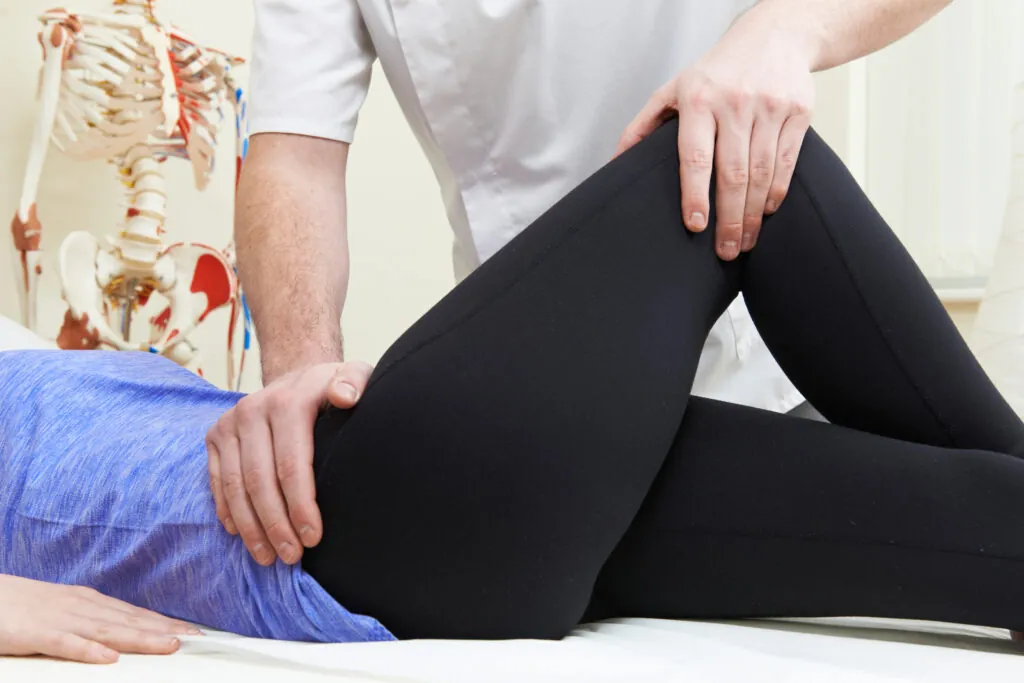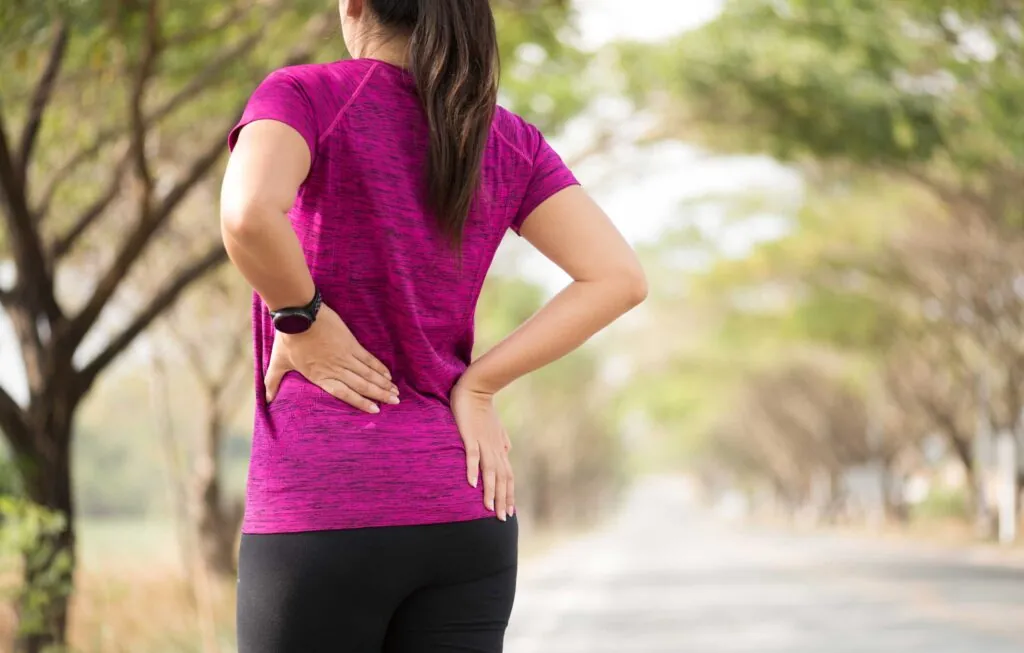Running is one of the most popular forms of exercise worldwide, but it’s also one of the most common sources of overuse injuries. Studies show that about 50% of runners experience a running-related injury each year, and at any given time approximately 25% are actively injured. Hip pain is among the most frequent complaints. The hip joint carries heavy loads with every stride, making it vulnerable when training volume, intensity, or mechanics are off balance. This article will explore the common symptoms, causes, and physical therapy treatments for hip pain after running.
Symptoms of Hip Pain While Running
Hip pain can present in different ways depending on the underlying cause:
- Pain in the hip joint itself is the most obvious symptom, but the discomfort isn’t always localized.
- Hip pain from osteoarthritis can actually refer pain down toward the knee, which can confuse runners into thinking the problem isn’t in the hip at all.
- Lateral hip pain (often from gluteal tendon issues) can radiate down the outside of the hip and thigh.
- Some runners may notice catching, clicking, or popping sensations, while others simply feel a deep ache that worsens after longer runs.
Causes of Hip Pain While Running
There are many potential causes of hip pain, but in runners, the common thread is usually overuse. When the training load outpaces the body’s ability to recover, tissues break down faster than they can rebuild. This is why volume management is one of the most important aspects of injury prevention.
Volume Management
A common rule of thumb in running is to increase mileage by no more than 10% per week. Rapid spikes in distance, pace, or hill running often set the stage for hip injuries. Even well-conditioned runners can run into trouble if their training progression is too aggressive. Below are some specific causes of hip pain:
General Muscle Strains
- Hip flexor strains present as pain in the front of the hip or groin, especially with uphill running or sprinting.
- Hamstring strains usually cause pain in the back of the thigh or near the sit bone, aggravated by faster running.
- Adductor strains cause groin pain, often worse with directional changes or powerful push-offs.
Labral Tears
The hip labrum is the cartilage ring that deepens the socket of the hip. Tears may cause sharp groin pain, catching or clicking sensations, and limited hip rotation. Running with a labral tear often feels unstable or painful at end ranges.
Gluteal Tendinopathy
Irritation of the gluteus tendons can cause pain on the outside of the hip. It often worsens with single-leg loading, hills, or lying on the painful side at night.
Stress Fractures
One of the more serious causes of hip pain in runners, stress fractures of the femoral neck or pelvis typically present as deep, aching pain that worsens with weight-bearing. Night pain and pain that increases with every step are red flags requiring medical imaging.
Physical Therapy Treatment of Hip Pain

The first step in treating hip pain is a comprehensive evaluation by a physical therapist. The same symptom—hip pain after running—can stem from very different problems. For example, a hip flexor strain requires a very different approach than a stress fracture.
Individualized Examination
A PT will not only examine muscle strength, joint mobility, and movement patterns, but will also look closely at your running routine. Volume management is as important as physical deficits. If your training load is the main driver of your pain, it must be addressed.
Running Volume Management
Your therapist will help scale your running routine to a level that matches your current tolerance. This may mean temporarily reducing mileage, modifying terrain, or adjusting pace. The goal is not to stop running, but to find the sweet spot where your body can recover and rebuild. From there, a graded progression safely returns you to 100% training.
Common PT Interventions
Alongside running modifications, PTs use a variety of interventions to promote healing and performance:
- Strength training targeting the glutes, core, and hip stabilizers to better absorb running loads.
- Mobility and recovery work to restore joint range of motion and reduce stiffness.
- Technique coaching to optimize stride mechanics and reduce excess stress on the hip.
- Pain management strategies, which may include manual therapy, soft tissue work, or modalities for symptom relief.
When these elements are combined, most runners can recover and return to running stronger than before. Additionally, strength training not only aids in the rehab process, but also improves running economy and performance.
Final Thoughts

Hip pain after running is common, but it’s not something you should push through or ignore. With the right diagnosis and treatment plan, most runners are able to address the root cause, rebuild strength, and safely resume training.
The key is to avoid one-size-fits-all solutions. Every case of hip pain is different, and a tailored program from a physical therapist ensures you get the right balance of rest, progression, and exercise.
Physical Therapy Near You
Don’t wait to seek treatment if you’re experiencing hip pain while running. Use our interactive map tool to find a physical therapist in your area. We are dedicated to helping you find pain relief and live a healthier, more active life. Schedule an appointment with one of our movement experts today.
Find a PT Clinic Near You!


